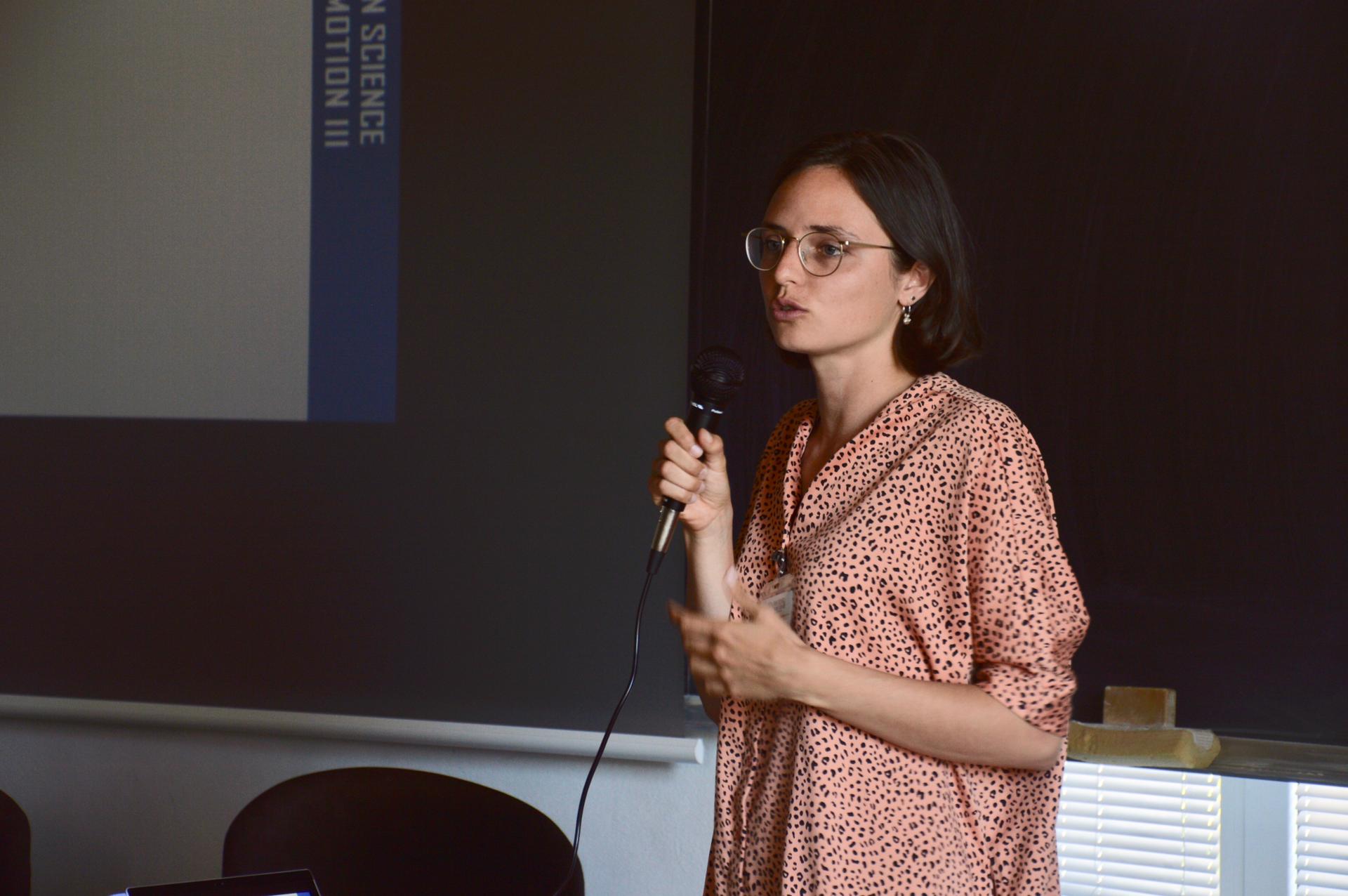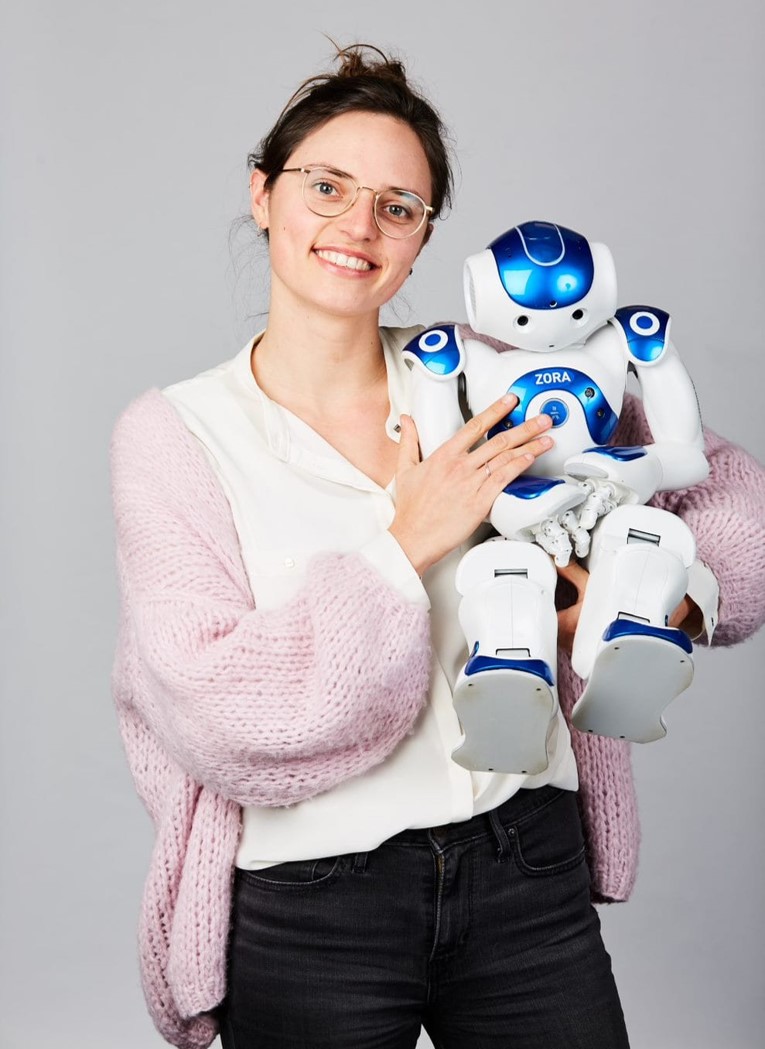
From May 31 to the 2nd of June I went to my very first international conference: Pain Science in Motion 2019 in Savona, Italy. This conference is organized every two years by the international research group Pain In Motion, of which I am very proud to be a member. This conference gives young PhD researchers the opportunity to do poster presentations as well as oral presentations about their research protocols or ongoing research without final results. This is how I got the possibility to present my PhD research protocol, even though I do not have results to present so far.
Did you know ZORA already? ZORA is a humanoid robot, which means she is designed to appear human characteristics, such as movements and appearance. Humanoid robots can be programmed to work with people, and to communicate verbally and nonverbally.

My research is about the effects of robot distraction during painful procedures in children with cancer or chronic immune deficiencies. Beran et al. (2013) were the first to examine the effectiveness of child-robot interaction for reducing children’s pain and distress during a medical procedure. The results of their study indicated that children who were distracted with a humanoid robot during vaccinations had lower pain ratings and less distress. Also, children who reported higher pain before the procedure, experienced a greater pain reduction than children who reported lower pain before the procedure. This means that the robot intervention is more useful for children who reported more pain at their previous vaccination (1). However, the impact of distraction by a humanoid robot in children who undergo repeated painful puncture procedures, such as children with cancer of chronic immune deficiencies remains as yet to be investigated.
Did you know that cancer survivors, not only adults but also children, have a greater chance of developing chronic pain? These chronic pain complaints may not only arise from treatments and medications but also from how children remember their pain (i.e., the pain memory). Indeed, studies have shown that negative pain memories are a better predictor of future reporting of pain than the actual initial pain reporting (2). Accordingly, understanding how we can modify or alter negative pain memories is critically important! That is why memory bias will be the primary outcome of this study.
Presenting my protocol in an oral presentation at this conference has given me very valuable input from the public. Not only Pain In Motion members but also other researchers from different countries and research groups shared their experiences and tips, and I have been very pleased to incorporate all these tips into the fine-tuning of my research.
ZORA and I will keep you posted about the results of this study!
Ready to kick the PhD life!
Emma Rheel
2019 Pain in Motion
References and further reading:
(1) Beran TN, Ramirez-Serrano A, Vanderkooi OG, Kuhn S. Reducing children's pain and distress towards flu vaccinations: a novel and effective application of humanoid robotics. Vaccine. 2013;31(25):2772-7.
(2) Noel M, Chambers CT, McGrath PJ, Klein RM, Stewart SH. The influence of children's pain memories on subsequent pain experience. Pain. 2012;153(8):1563-72.